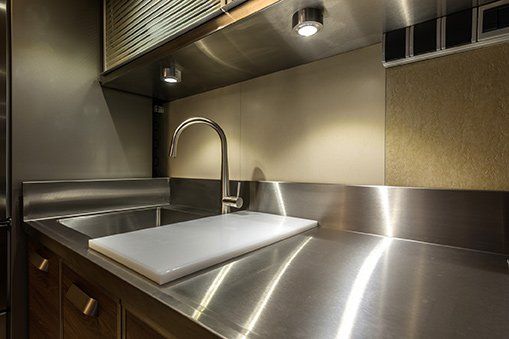Frequently Asked Questions About Marine Edge Countertops
- By Admin
- •
- 25 Jul, 2018

When you choose a custom countertop for a residential or commercial kitchen, you have to select the type of edge for the countertop. There are many different types of edges, including mitered, eased, waterfall, bullnose, ogee, and marine.
A marine edge can be beneficial in certain kitchens. However, this edge is not a common type countertop edge, so you may be unfamiliar with it. This guide answers a few of the common questions you may have when you first learn about a marine edge countertop. If you are selecting the details for your new countertop, then read on to learn more.
What Is a Marine Edge Countertop?
A marine edge, also referred to as a no drip edge, is one of the most unique edges that you can select for a countertop. A marine edge features a raised ridge along the sides of your countertop. Most countertops feature an edge that is level with or tapers off from the rest of the countertop. A raised ridge along the countertop helps to prevent any liquids from dripping off, making it a great preparation space.
What Are the Benefits of a Marine Edge Countertop?
Because marine edge countertops prevent liquids from dripping over the edge of the countertop, these edges are typically found in commercial spaces, such as restaurants.
In a busy restaurant or commercial kitchen space, many people (like cooks and servers) walk back and forth through the kitchen. When liquids and juices are spilled on a regular countertop, they can then drip onto the floor. This creates a hazard for those walking in the space because they can slip and fall. These spills can also make the space unsanitary.
A marine edge holds these liquids on the countertop, where they can easily be wiped away, keeping the kitchen sanitary and safe.
Are There Any Disadvantages to a Marine Edge Countertop?
While there are benefits to a marine edge countertop, there are also downsides as well. The biggest downside to installing a marine edge on your countertop is the cost and time involved.
Most countertop edges are level with the rest of the countertop. As such, the countertop just needs to be sanded or molded to create the edge. However, when it comes to a marine edge, the edge actually has to be specially fabricated. This involves layering the material the countertop is composed of to form the edge.
As such, a marine edge might not be the best for those who are looking to keep costs low for the countertop or who need a countertop quickly.
What Types of Countertops Can a Marine Edge Be Used On?
A marine edge can be used on most types of materials that countertops are made from. Because they are often found in commercial kitchens and restaurant spaces, these edges are most often found on stainless steel countertops. However, a marine edge is also a good choice for concrete, quartz, granite and wood countertops.
Keep in mind that depending on the material used, there may or may not be a seam between the countertop and the edge. Most metal and concrete countertops do not have a seam since the countertop is molded or shaped with the edge in place. However, both wood and natural stone materials have the edge layered on top of the original countertop, creating a seam.
Are you looking to have a new countertop installed in your home or business? Our team at Colonial Kitchen Fabrication and Sheet Metal can help you select the right materials and edge for your countertop. Contact us today to learn how we can help you with all of your countertop needs.








